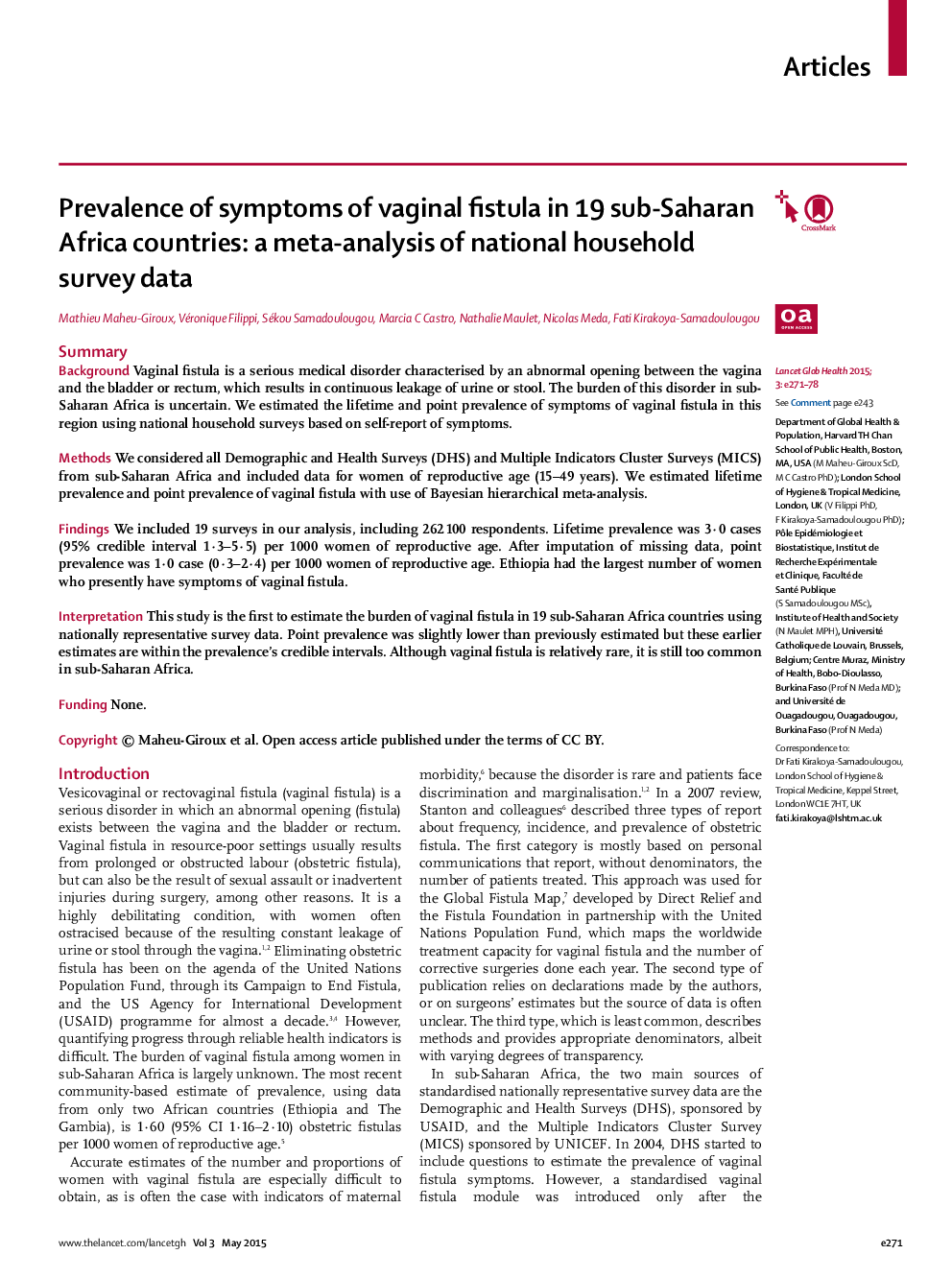| Article ID | Journal | Published Year | Pages | File Type |
|---|---|---|---|---|
| 3409140 | The Lancet Global Health | 2015 | 8 Pages |
SummaryBackgroundVaginal fistula is a serious medical disorder characterised by an abnormal opening between the vagina and the bladder or rectum, which results in continuous leakage of urine or stool. The burden of this disorder in sub-Saharan Africa is uncertain. We estimated the lifetime and point prevalence of symptoms of vaginal fistula in this region using national household surveys based on self-report of symptoms.MethodsWe considered all Demographic and Health Surveys (DHS) and Multiple Indicators Cluster Surveys (MICS) from sub-Saharan Africa and included data for women of reproductive age (15–49 years). We estimated lifetime prevalence and point prevalence of vaginal fistula with use of Bayesian hierarchical meta-analysis.FindingsWe included 19 surveys in our analysis, including 262 100 respondents. Lifetime prevalence was 3·0 cases (95% credible interval 1·3–5·5) per 1000 women of reproductive age. After imputation of missing data, point prevalence was 1·0 case (0·3–2·4) per 1000 women of reproductive age. Ethiopia had the largest number of women who presently have symptoms of vaginal fistula.InterpretationThis study is the first to estimate the burden of vaginal fistula in 19 sub-Saharan Africa countries using nationally representative survey data. Point prevalence was slightly lower than previously estimated but these earlier estimates are within the prevalence's credible intervals. Although vaginal fistula is relatively rare, it is still too common in sub-Saharan Africa.FundingNone.
